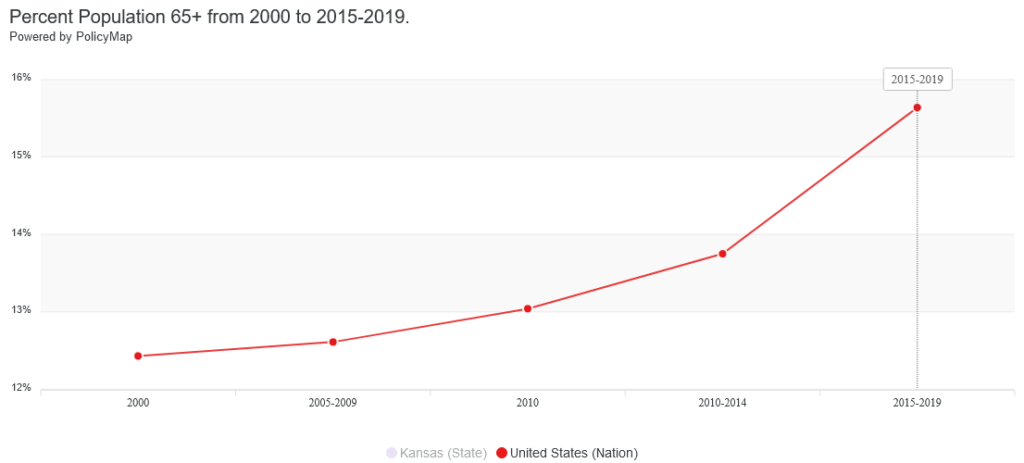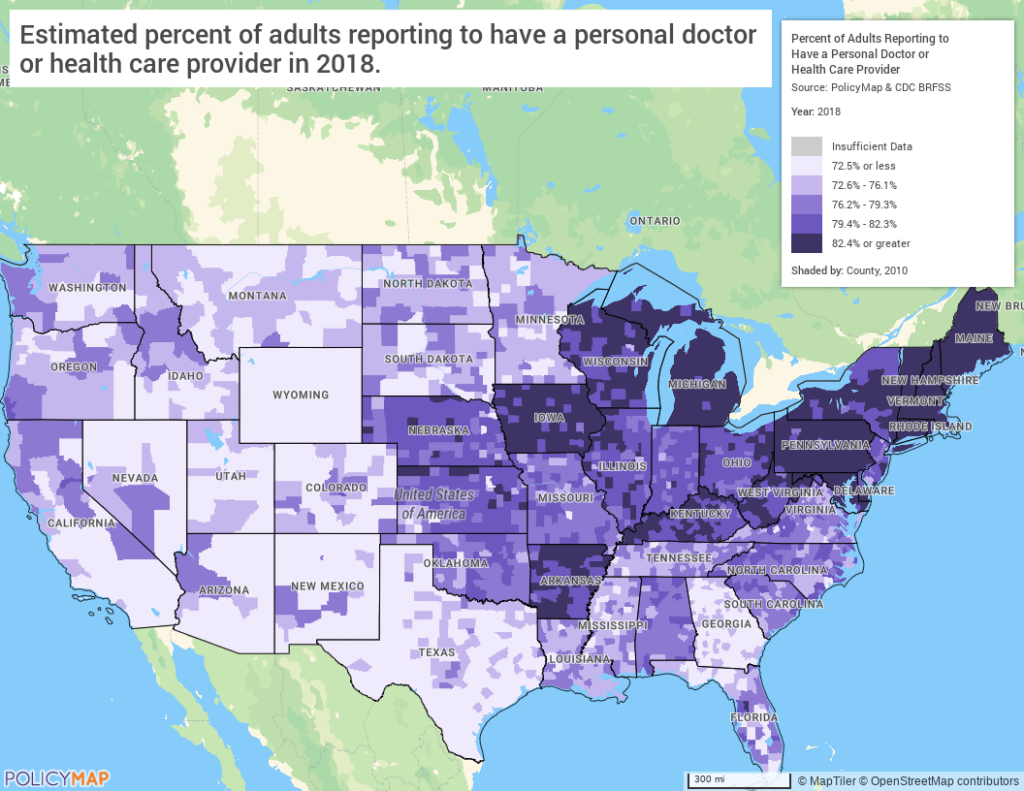Plan for Physician Shortages Using Data from HRSA

Data
Heath Professional Shortage Areas (HPSA)
Source
Health Resources and Services Administration (HRSA)
Find on PolicyMap
- Health
- HRSA
- HPSA
- HRSA
The COVID-19 pandemic has highlighted weaknesses in our country’s health care system with a national focus on short-term serious shortages of hospital beds and ventilators. But over the next few years, as we recover from this acute crisis, we will need to address a long-term shortage of physicians. Some areas of the country will likely fare better than others. Mapping current shortages in health professionals can signal which communities will need a greater supply of doctors over the coming decades. Health Professional Shortage Area (HPSA) data from the Health Resources and Services Administration (HRSA), now available to all PolicyMap users, shows which areas are already experiencing shortages.
The Worsening Physician Shortage
As the chart below shows, the population of older adults in the United States is increasing rapidly. This demographic trend will lead to more people in need of medical care as they age. It may also lead to fewer physicians as medical professionals enter retirement. The Association of American Medical Colleges recently documented this and other causes of the physician shortage. Their statistical model predicts that over the next twenty years, the country could face a shortage of between 54,100 and 139,000 physicians.

Regional Disparities
Access to a primary care doctor is uneven across the US. The map below shows that in the northeast and Midwest, people are more likely to report having a personal doctor or health care provider that they see regularly than in the western or southeastern states.

One reason for this lower access to primary care is lower rates of medical insurance in those areas. The map below shows that people are more likely to be uninsured in the western states and in the southeast.
Identifying Physician Shortages
The Health Resources and Services Administration publishes data that pinpoints areas with the greatest shortages of health professionals. Health Professional Service Area scores combine information on poverty, access to healthcare providers, and more to arrive at a single score where higher scoring areas have greater shortages. Many of the same areas with higher rates of uninsured people also have the highest scores for Primary Care health professional shortages. The map below shows primary care shortages in the darkest purple color in the southeast and parts of the southwest. The anticipated wave of retiring physicians and aging population may hit those areas of the country the hardest.
About the Data
Although this post has featured only Primary Care HPSAs, HRSA has also calculated shortage areas for Dental and Mental healthcare providers. Each of the three types of HPSAs is scored using slightly different criteria. Dental HPSAs consider fluoridation of the water, for example.
HRSA updates their HPSA data on a rolling basis. Data published on PolicyMap should be considered a snapshot of the HPSA areas. To determine whether a site is located within a HPSA, consult the HRSA website.
HRSA defines Health Professional Shortage Areas (HPSAs) as a combination of counties, county subdivisions, and census tracts. PolicyMap shows this data for census tracts so that all tracts inside a county or county subdivision identified as a HPSA have the same value. This allows users to combine HPSA data with other data at the census tract level. However, use caution when examining estimates of full-time equivalent staff member shortages for this reason.